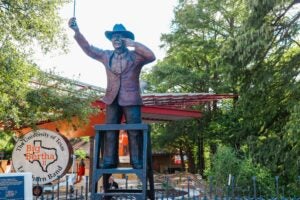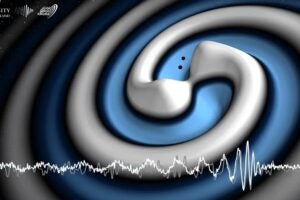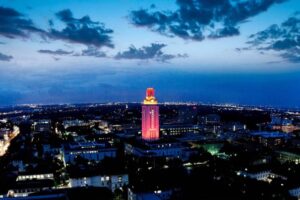AUSTIN, Texas—Many of the cultural history objects of the Texas Memorial Museum (TMM) will be moved to The University of Texas at Austin’s Center for American History over the next several months, allowing the TMM to focus fully on its major collections in science, Dr. Edward C. Theriot, director of the museum, has announced.
When established in 1935, the TMM was one of the few museums in Texas with a focus on collection, study and exhibition of historical objects.
“Other institutions with a mission to study and exhibit historical items have really blossomed and become great successes,” Theriot said. “For example, the Center for American History, because of its outstanding collections and academic credentials, is the single largest loaner of objects to the Bob Bullock Texas State History Museum, which is the single largest exhibitor of Texas history.
“Rather than compete with both of these fine institutions, we are offering help in the form of collections. Meanwhile, we can focus on public needs in science research and education, and develop programs. Common sense tells us this is the best way to serve the state of Texas.”
All objects documenting Texas civic history (Texana) will be moved to The University of Texas at Austin’s Center for American History (CAH), strengthening what is already the largest repository of Texana in the world. CAH’s four major venues offer a host of opportunities for public education, and include the John Nance Garner Museum in Uvalde, the Sam Rayburn Library and Museum in Bonham, Winedale Restoration Project near Round Top, and CAH’s main research and collections facility in Austin.
“I am so pleased that these important collections will remain at The University of Texas at Austin,” said CAH Director Don Carleton, “and I applaud the changes at TMM. Not only is the museum doing great things for cultural history research and education in Texas, but for natural science, as well.”
“We are still dedicated to celebrating Texas,” Theriot said, “only now we will do this through the study and exhibition of Texas’ unique biological and geological heritage, and through that, its cultural heritage. After all, its geology has been an important determinant of settlement and land use patterns. The Permian Basin has produced many important fossils and was also a keystone to Texas’ entrance into the oil industry. We have animal, plant, geological and paleontological specimens collected by famous Texans, and we will tell the uniquely Texas stories of exploration and discovery. By personalizing science, we’ll always have a bit of Texas history at the TMM.
“These changes reflect the development of the TMM over the last 60 years. Our curators and associated university faculty have been world leaders in natural sciences, particularly in studies of Texas paleontology for more than 50 years. Nearly 95 percent of our total collection is biological or geological. We have specimens from nearly every county in Texas, and many are world-class. There is no museum specializing in natural science in the Central Texas area, and we are uniquely situated to fill that void at a time when the state and country find that science skills are critical to our future.”
“Moving our cultural history collections to more appropriate venues is a highly structured process and will take several months,” he said. “Meanwhile, the museum is preparing its natural science collection for an exhibit opening in spring 2003 highlighting its most treasured specimens, with new displays of dinosaurs, fossil animals and more. Exhibits will be interactive, fun and educational.”
The museum will retain a small cultural history exhibit until the distribution of its cultural history collection is complete.
Texas Memorial Museum has operated under the College of Natural Science at The University of Texas at Austin since 1995. Its natural science collections include Quetzalcoatlus northropi, commonly known as the Texas Pterosaur, the largest flying animal ever found, as well as other important specimens in paleontology, ichthyology, herpetology, entomology and invertebrate zoology. Outreach efforts include partnerships with Austin Nature and Science Center’s Dino Pit project and the Grace Museum in Abilene. TMM’s scientists have worked as consultants on Austin’s Hartman Prehistoric Garden as well as other natural science projects in Texas. The museum is a partner in the CT-scanner facility operating under The University of Texas at Austin’s Jackson School of Geological Sciences. In addition to its public museum, TMM operates The University of Texas at Austin’s Vertebrate Paleontology Laboratory, Non-vertebrate Paleontology Laboratory and the Texas Natural History Collections.
For more information contact: Ed Theriot and Susan Romberg, Texas Memorial Museum of Science and History, 512-232-5654.



